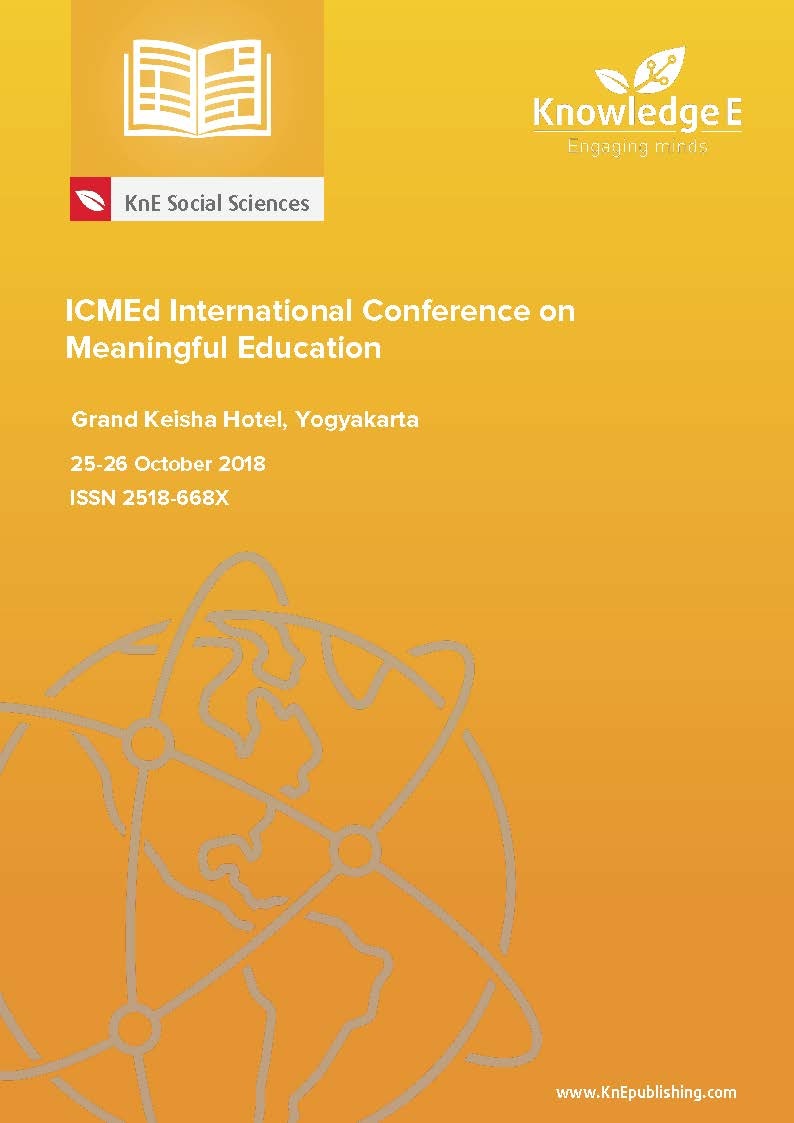The Aspiration of Departement in College by Gender Tendency
DOI:
https://doi.org/10.18502/kss.v3i17.4679Abstract
Interest in this research arises from one of the things that sometimes escape the attention, namely the gender tendency toward a major in college. This study used final teenage data at first year students at Yogyakarta State University to see how gender differences can represent aspirations for science and social-humaniora majors. Data were collected using a scale. Scale was distributed to 425 respondents by sampling propotioned cluster random sampling. Using the survey method we found that men dominate in the exact plane of about 62.5% and women about 37.4%. The opposite is shown in the non-exact plane dominated by women with a percentage of about 80.4% and about 19.5% of males. This difference is also supported by other factors such as
the importance of achievement beliefs in the department, and gender stereotypes in the community that are still inherent. This research is expected to contribute to the literature on career development and can form the basis of the formulation of career guidance programs that can include attention to gender differences.
Keywords: department in college; gender; late adolescence; identity career status.
References
Blakemore, S.-J., & Mills, KL (2014). Is adolescence a sensitive period for sociocultural processing? Annual Review of Psychology, 65(1), 187–207. https://doi.org/10.1146/ annurev-psych-010213-115202
Dik, BJ, Sargent, AM, & Steger, MF (2008). Career Development Strivings. Journal of Career Development, 35(1), 23–41. https://doi.org/10.1177/0894845308317934
Duffy, RD, & Sedlacek, WE (2010). The salence of career calling among college students: exploring group differences and links to religiouisness, life meaning, and life satisfaction. The Career Development Quarterly, 59(1), 27–41. https://doi.org/10. 1017/CBO9781107415324.004
Geldard, K. (2009). Youth counseling: practical interventions for risky teens. (K. Geldard, Ed.). Yogyakarta: Student Library.
Hazari, Z., Sonnert, G., Sadler, PM, & Shanahan, M.-C. (2010). Connecting high school physics experiences, outcome expectations, physics identity, and physics career choice: A gender study. Journal of Research in Science Teaching, 47(8), n / a. https: //doi.org/10.1002/tea.20363
Howard, AL, & Galambos, NL (2011). Transitions to adulthood. Encyclopedia of Adolescence, 1.
Kim, AY, Sinatra, GM, & Seyranian, V. (2018). Developing a STEM Identity Among Young Women: A Social Identity Perspective. Review of Educational Research, 88(4), 589–625. https://doi.org/10.3102/0034654318779957
Kroger, J. (2007). Identity development (Second). California: Sage Publication.
Morgan, SL, Gelbgiser, D., & Weeden, KA (2013). Feeding the pipeline: Gender, occupational plans, and college major selection. Social Science Research, 42(4), 989–1005. https://doi.org/10.1016/J.SSRESEARCH.2013.03.008
Patel, SG, Salahuddin, NM, & O’Brien, KM (2008). Career decision-making selfefficacy of Vietnamese adolescents. Journal of Career Development, 34(3), 218-240. https://doi.org/10.1177/0894845307308488
Perez, T., Cromley, JG, & Kaplan, A. (2014). The role of identity development, values, and costs in college STEM retention. Journal of educational psychology, 106 (1), 315.
Priess, HA, Lindberg, SM, & Hyde, JS (2009). Adolescent gender-role identity and mental health: Gender intensification revised. Child Development, 80(5), 1531-1544. https://doi.org/10.1111/j.1467-8624.2009.01349.x
Riegle-Crumb, C., Moore, C., & Ramos-wada, A. (2010). Who Wants to Have a Career in Science or Math? Exploring Adolescents’ Future Aspirations by Gender and Race / Ethnicity, 95(3), 458–476. https://doi.org/10.1002/sce.20431
Robnett, RD, & Leaper, C. (2013). Friendship Groups, Personal Motivation, and Gender in Relations to High School Students’ Career Interest STEM. Journal of Research on Adolescence, 23(4), 652–664. https://doi.org/10.1111/jora.12013
Santrock, JW (2014). Adolecence (fifteenth). New York: McGraw-Hill Education.
Thorne, A., & Michaelieu, Q. (1996). Situating Adolescent Gender and Self-Esteem with Personal Memories. Child Development, 67(4), 1374–1390. https://doi.org/10. 1111/j.1467-8624.1996.tb01802.x
Tracey, TJG, Robbins, SB, & Hofsess, CD (2005). Stability and change in interests: A longitudinal study of adolescents from grades 8 through 12. Journal of Vocational Behavior, 66(1), 1–25. https://doi.org/10.1016/j.jvb.2003.11.002
Wang, M.-T., Eccles, JS, & Kenny, S. (2013). Not lack of ability but more choice. Psychological Science, 24(5), 770-775. https://doi.org/10.1177/0956797612458937
Yusuf, AM, & Daharnis, D. (2013). Journal of counseling and education. Journal of Counseling and Education (Vol. 1). Retrieved from http://journal.konselingindonesia. com/index.php/jkp/article/view/108/91
Zafar, B. (2013). College Major Choice and the Gender Gap. Journal of Human Resources, 48(3), 545–595. https://doi.org/10.3368/jhr.48.3.545

